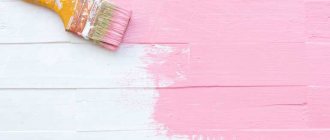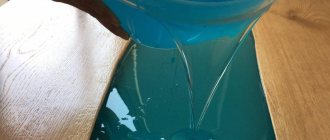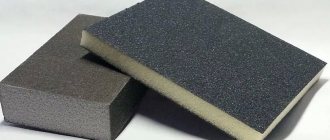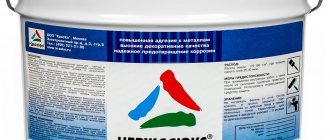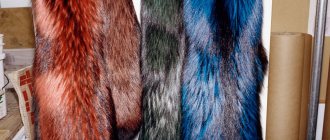» How to get color » How to get pink by mixing paints
It is believed that pink is a light shade of red, but bright colors such as fuchsia or crimson have a different nature. My package of acrylic paints did not contain pink, but there were two red colors: dark red and carmine. Dark frame has a rich, distinctly warm undertone, and carmine is a purple-crimson. It is these two tones of red that will be able to reveal the entire palette of pink, and if you only have one warm color, then rich fuchsia-magenta shades will have to be obtained by mixing red + white and blue, and this is a third-order color that will not have saturation, but only a faded medium pink tone.
How to get fuchsia pink by mixing paints?
Bright, cold pink, according to some theories, is considered a primary color, so you can get red from it, but from red we cannot get fuchsia, but only imitate its pale likeness. So, for example, take red paint, white, blue (ultramarine), mix in proportions of approximately 100:30:5 and get a medium, cool pink color, reminiscent of fuchsia.
If, to obtain the desired color, we take not warm red paint, but carmine, a rich purple-red color, then we will not have to resort to blue, since even lightly highlighting it will give the desired effect. Very light dilution gives a rich raspberry color, and a little more intense dilution gives fuchsia or magenta.
How to get a medium pink warm or cool?
Rich fuchsia in a pink palette is the exception rather than the rule. The main range of tones lies in the light area and therefore a sufficient amount of white helps to form many shades of pink: both warm and cold. Mixing white and red, with both fiery and purple undertones, leads to the formation of a palette of this color. Carmine and white, which is at least half of the first component and more (with increasing lightness), form soft, medium-cold, pure pink paints.
Dark red and white, which has no less share than in the previous case, create soft, warm tones of pink.
However, these colors can be made even warmer by adding a small amount of yellow.
In general, these will turn out to be coral-pink tones, which, with increasing lightness, will gain the aesthetics of pink.
Getting different shades of pink
As has already become clear, the simplest option to get pink is to combine white and red paint. To obtain more saturated shades, the red dye is diluted with water. Then white is added to the diluted red.
The characteristics of the result depend on the amount of white. This is relevant for painting, but this approach can also be applied to repair work on painting walls.
Let's see how to make a pink-purple shade. This may be necessary for drawing lilacs. To obtain pink with a purple undertone, cobalt is combined with manganese. You should work as carefully as possible and combine the substances in drops. If one of the components is in greater quantity, it will be very difficult to correct the error.
Pink is obtained by combining raspberry or cherry dye with white. In each of the two cases the result will be different. Raspberry color will give brighter shades, cherry will be less saturated. Lilac is easily obtained by combining blue, white and red colors.
Pink with a hint of peach is obtained by counting the drops. Take a white base and then, dripping in small drops, add red, brown and yellow paint. The dosage should be very careful, and it is better to write down the number of drops for yourself. After a drop of one color falls into the base, the mass is mixed and the result is assessed. You should add brown color very carefully.
After obtaining the desired result, it is checked on white paper, wallpaper or a wall. They paint it and check it in bright light. If the color is not satisfactory, then a correction is made - whether it is necessary to add and mix more white.
How to get complex shades of pink?
There are always significantly fewer pure tones than complex and clouded ones, but the ability to create the latter is more widely applicable, since these are more natural shades that are located in the light or in the shadows and fit organically into palettes and compositions. Most often, these tones consist of 3 or more primary colors. For example, warm shades of lilac: ash rose. As a basis, we take a shade obtained by mixing dark red, yellow and white and add a drop of blue (ultramarine) to it.
The resulting tone is soft, but has a pronounced grayish tint. For a darker version of this color scheme, add a little more blue and dark red.
Tinting acrylic paints
It is not always possible to tint paint yourself and obtain a truly high-quality result. In addition, if the area to be painted is large and there is not enough paint, it is almost impossible to repeat the shade exactly. Therefore, it is worth ordering paint tinting from professionals; this service is offered by any large hardware store.
The desired shade can be selected from the palette provided by the manufacturer, and the finished paint will have exactly the same tone. This option is more suitable for those who do not want to experiment with colors on their own; by paying a little extra, you can be sure of the result and the excellent quality of the paint!
Source
How to get purple color?
One of the most popular shades of pink is lilac. Complex tone from very light to dark colors. It is obtained by mixing medium pink with blue and red in different proportions.
It is also possible to obtain it by mixing white, warm or cold red with blue (Prussian blue). The amount of white will control the saturation and darkness of the mauve pink.
Additionally, you can darken it with black, but you will need a very small amount.
You can also get a very dark lingonberry shade using dark red.
Working with oil and acrylic paints
To obtain orange, yellow and red dyes are applied close to each other. If you move away from the wall being treated, you can see the effect from a distance. When mixing acrylic paints, be sure to use solvents, this will make the drying process slower.
The peculiarity of oil paints is their higher density and depth. Such materials are mixed using one of the above methods. It is allowed to use layer-by-layer mixing: first yellow and then red. Another layer of transparent yellow paint is allowed on top.
When using oil paints, experts recommend not combining more than three colors at the same time. Only professional artists know how to use this trick correctly.
Knowing these principles, the process of obtaining an orange tint will seem quite simple. Now you know how to make formulations of different intensities. This will help budding artists and interior designers in their work.
How to get bright orange (1 video)
Various options for orange (38 photos)
How to get cooler fuchsia pinks?
As we see in all cases where blue is used, the color acquires a dirty impurity, but if we use carmine, whose color includes the display of the blue spectrum, then creating a tertiary color based on purple-red, white and blue will not be so destructive to it saturation.
This is also due to the fact that to create the paint you will need a very small amount of additional paint: 100:20:5. By diluting the resulting paints with white, we get medium pink colors: cold and bright.
Table for obtaining shades of pink when mixing colors
This table shows how other colors influence the development of pink shades and how their undertone changes. The center is the main tone, around it are the primary colors for mixing, then to the periphery are the products of mixing the main tone and the adjacent shade in a ratio of 100:50, and then the percentage decreases to 100:20. Next to the main mixing product, the shades are darkened by 20% black and lightened by 20% white.
How to get other colors and their shades: theory and practice. Click on the icon.
One comment on “How to get pink by mixing paints”
- Vlad
March 4, 2021, 1:17 am
Thanks a lot.
Getting pink when working with different paints
First you need to decide exactly what is considered pink. The reference shade is the color of the petals of Rose Canina - this is a traditional rosehip that is widespread almost everywhere. The technology for creating the shade will depend on the type of paint used.
To get pink from watercolor, you need to take red and then dilute it with water until the desired shade appears. Depending on the desired saturation, add more or less water.
When gouache is used, the technology for creating color will change slightly. Take red paint and regular white. Then both materials are mixed on the palette - the result is pink. If you add more red to the resulting mixture, you will get a bright pink hue. With more white, the tint will become light pink.
It must be borne in mind that after drying the gouache becomes lighter than when wet.
To obtain a pink color when working with oil-based paints and varnishes, take “kraplak” paint and add white. Depending on the proportion of the two substances, the pink will be brighter or paler. When using acrylic paints, white is also used.
In the video: mixing colors and getting new ones.



